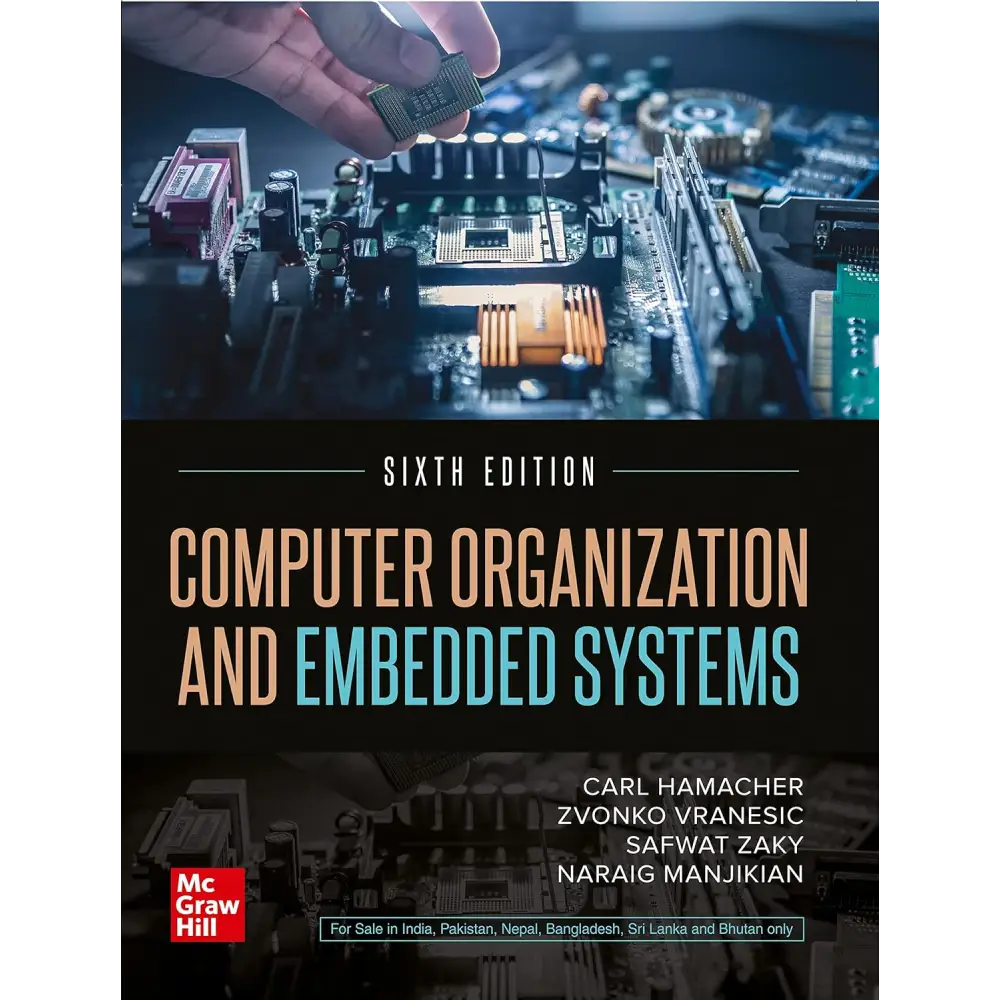BOOKZONE
Computer Organization and Embedded Systems, 6/e
Paperback
by Carl Hamacher
SKU:9789355323729
Bulk Discount Get Exta 5% upto 10%
Share

Overview
The sixth edition of Computer Organization and Embedded Systems covers the key topics of the subject. It presents hardware design principles and shows how hardware design is influenced by the requirements of software. The book carefully explains the main principles supported by examples drawn from commercially available processors. The book is suitable for undergraduate computer engineering students and computer science specialists.
Key Features
• Examines four popular processors like Altera's Nios II, Freescale's ColdFire, ARM, and Intels IA-32 in detail
• Extensively covers embedded systems, arguing that many devices previously not thought of as computers do, in fact, have computers in them
• Discusses Microcontrollers and system-on-a-chip implementations
• Contains graduated difficulty problems at the end of each chapter classified as Easy, Medium, or Difficult, allowing instructors to assign problems based on difficulty leve
About the Author
Carl Hamacher joined Queen’s University in 1991, where he is now Professor Emeritus in the Department of Electrical and Computer Engineering. He received his B.A.Sc. degree in Engineering Physics from the University of Waterloo, Canada, the M.Sc. degree in Electrical Engineering from Queen’s University, Canada, and the Ph.D. degree in Electrical Engineering from Syracuse University, New York. His research interests are in multiprocessors and multicomputers, focusing on their interconnection networks.
Zvonko Vranesic received his B.A.Sc., M.A.Sc., and Ph.D. degrees, all in Electrical Engineering, from the University of Toronto. In 1968 he joined the University of Toronto, where he is now a Professor Emeritus in the Department of Electrical & Computer Engineering. His current research interests include computer architecture and field-programmable VLSI technology.
Safwat Zaky received his B.Sc. degree in Electrical Engineering and B.Sc. in Mathematics, both from Cairo University, Egypt, and his M.A.Sc. and Ph.D. degrees in Electrical Engineering from the University of Toronto. In 1973, he joined the University of Toronto, where he is now Professor Emeritus in the Department of Electrical and Computer Engineering. His research interests are in the areas of computer architecture, digital-circuit design, and electromagnetic compatibility.
Naraig Manjikian received his B.A.Sc. degree in Computer Engineering and M.A.Sc. degree in Electrical Engineering from the University of Waterloo, Canada, and his Ph.D. degree in Electrical Engineering from the University of Toronto. In 1997, he joined Queen’s University, Kingston, Canada, where he is now an Associate Professor in the Department of Electrical and Computer Engineering. His research interests are in the areas of computer architecture, multiprocessor systems, field-programmable VLSI technology, and applications of parallel processing.
Contents
1. Basic Structure of Computers
2. Instruction Set Architecture
3. Basic Input/Output
4. Software
5. Basic Processing Unit
6. Pipelining
7. Input/output Organization
8. The Memory System
9. Arithmetic
10. Embedded Systems
11. System-On-A-Chip -- A Case Study
12. Parallel Processing and Performance
Appendix A Logic Circuits
Appendix B The Altera Nios II Processor
Appendix C The ColdFire Processor
Appendix D The ARM Processor
Appendix E The Intel IA-32 Architecture


